#Rhino Conservation
Explore tagged Tumblr posts
Text
Kenya is one of just four countries that holds the vast majority of the world's black rhinos. After nearly going extinct in the 1980s, the species has now doubled due to heroic conservation efforts to save them.
There are now 1,000 black rhinos in Kenya, to the point that the next conservation hurdle is securing protected appropriate habitat to house the growing population.
#rhino conservation#conservation#endangered species#habitat conservation#animal conservation#hope#good news#biodiversity#ecology#environment#new years 2025
592 notes
·
View notes
Text

On World Rhino Day, we celebrate these remarkable creatures — ‘the last living dinosaurs,’ as Daphne Sheldrick called them — and highlight the threats they face.









—
Dame Daphne Marjorie Sheldrick, DBE (née Jenkins; 4 June 1934 – 12 April 2018) was a Kenyan of British descent, author, conservationist and expert in animal husbandry, particularly the raising and reintegrating of orphaned elephants into the wild for over 30 years.
She was the founder of the Sheldrick Wildlife Trust.
🩶🦏🩶
#World Rhino Day 2024#World Rhino Day#rhinoceros#rhinos#last living dinosaurs#Daphne Sheldrick#Solio Rhino Sanctuary#Sheldrick Wildlife Trust#Tsavo West#Lake Nakuru National Park#poaching#rhino sanctuary#Solio Ranch#KWS Animal Capture Unit#Meru Rhino Sanctuary#Meru National Park#Tsavo Conservation Area#SWT/KWS#SWT Mobile Veterinary Unit#KWS Mobile Veterinary Unit#critically endangered#rhino conservation#orphaned black rhinos#black rhinos#conservation#save wildlife#protect wildlife#save animals#anti-poaching campaign#Kenya
3 notes
·
View notes
Text
How does one convince a Sumatran Rhino to play hide and seek in the rainforest?
The Sumatran rhinoceros (Dicerorhinus sumatrensis) is one of the most endangered large mammals in the world, with fewer than 80 individuals remaining in the wild. These magnificent creatures, native to the dense tropical forests of Indonesia and Malaysia, are known for their elusive nature and solitary habits. Imagining a Sumatran rhino playing hide and seek in the rainforest is a whimsical and…
#animal behavior#animal enrichment#animal training#animal welfare#anti-poaching#biodiversity#conservation awareness#conservation efforts#conservation initiatives#creative engagement#educational programs#endangered species#environmental outreach#ethical wildlife care#habitat preservation#hide and seek#natural behavior#playful learning#positive reinforcement#public involvement#rainforest#rhino conservation#rhino habitat#species protection#Sumatran rhino#Sumatran rhinoceros#tropical forests#wildlife conservation#wildlife education#wildlife preservation
0 notes
Text
Good News - May 15-21
Like these weekly compilations? Support me on Ko-fi! Also, if you tip me on Ko-fi, at the end of the month I'll send you a link to all of the articles I found but didn't use each week - almost double the content!
1. Translocation of 2,000 rhinos in Africa gets underway in “one of the most audacious conservation efforts of modern times”
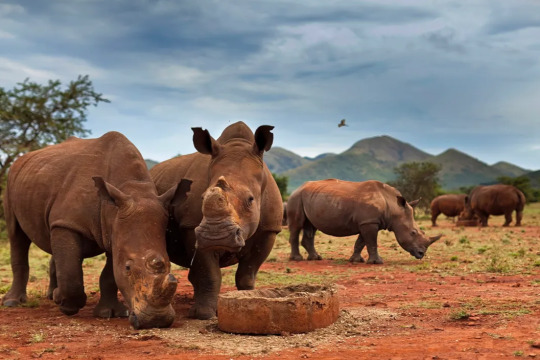
“The 2,000 rhinos - more than are currently found in any single wild location in Africa - represent around 12-15% of the continent’s remaining white rhino population. […] “Rhinos perform an important ecological function in the environment as a large grazing herbivore,” says Dale Wepener[….] “The protection of rhino is far more than just looking after rhino; other species that occur in the protected areas will benefit from the protection,” explains Jooste. “This will lead to an increase in diversity and result in much healthier ecosystems.”
2. Florida Corridor Buffers Effects of Climate Change on Wildlife — And People
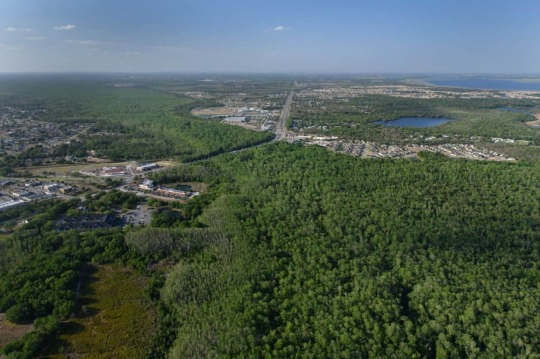
“A massive multi-partner effort that has conserved 10 million acres for wildlife in Florida over past decades will help buffer wildlife—and people—from the effects of climate change, a new report says. […] Protecting these corridors is important for wildlife genetics, demography and connectivity […], conducting prescribed fires in the corridor can reduce the risk of more intense wildfires [… and] they can provide buffers against hurricanes and seasonal thunderstorms.”
3. Global life expectancy to increase by nearly 5 years by 2050 despite geopolitical, metabolic, and environmental threats
“Increases are expected to be largest in countries where life expectancy is lower, contributing to a convergence of increased life expectancy across geographies. The trend is largely driven by public health measures that have prevented and improved survival rates from cardiovascular diseases, COVID-19, and a range of communicable, maternal, neonatal, and nutritional diseases (CMNNs).”
4. Valencia has Spain’s longest urban park

“Jardin del Turia (Turia Garden) is the green spine of the City of Valencia and Spain’s (and possibly Europe’s) longest urban park stretching for a length of 8.5 kilometres [… and] the current administration plans to make Jardin del Turia Europe’s largest city green space by extending it to the sea[….] Almost all Valencia residents (97 per cent) live within 300 metres of an urban green space. […] Jardin del Turia is a true urban oasis that provides exceptional thermal comfort, with a temperature difference of up to three degrees compared to other areas of the city.”
5. This Paint Could Clean Both Itself and the Air
“When an artificial ultraviolet light source shines on [photocatalytic] paint, the nanoparticles react with pollutants to make them break down—theoretically removing them from the nearby air and preventing a discoloring buildup. [… R]esearchers developed a new photocatalytic paint that they claim works using UV rays from ordinary sunlight, making its self-cleaning properties easier to activate. They’ve also shown that they can effectively produce this paint from recycled materials [including fallen leaves].”
6. Planting Seedlings for a Cooler Rockingham
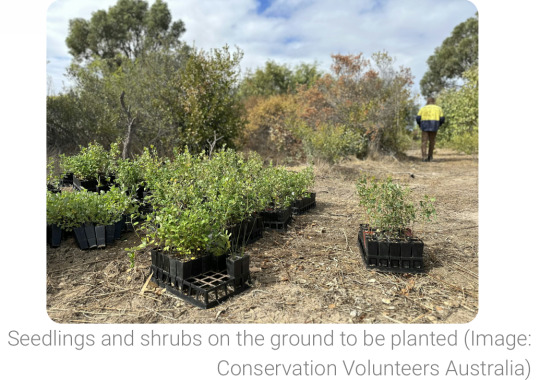
“A dedicated group of volunteers recently planted over a thousand native seedlings in Lewington Reserve [… and] re-established canopy cover to areas of the reserve to create cooling shade for the local community and provide homes for native wildlife. […] Planting lots of trees and shrubs in urban areas can help create shade and cool cities, mitigating the impacts of climate change, contributing to biodiversity conservation and building greener, more resilient communities.”
7. Sydney’s first dedicated affordable housing for trans women designed to deliver ‘positive outcomes’

“Community housing provider and charity Common Equity NSW, […] which is for people on very low to moderate incomes, prides itself on creating inclusive living and promotes the independence and well-being of people and communities […, and] will deliver the first-of-its-kind social housing in a bid to provide a safe place to live for transgender women seeking an affordable home.”
8. Rewilding: How a herd of bison reintroduced to Romania is helping ‘supercharge’ carbon removal
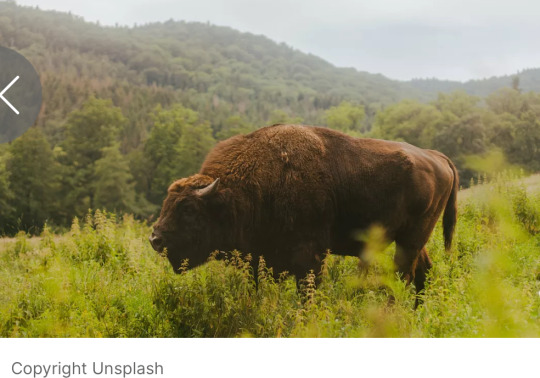
“170 European Bison reintroduced to Romania’s Țarcu mountains could help capture and store the carbon released by up to 84,000 average US petrol cars each year. […] By grazing a 48 square kilometre area of grassland in a wider landscape of 300 kilometres squared, they helped to capture an additional 54,000 tonnes of carbon each year. That is around 10 times the amount that would be captured by the ecosystem without the bison.”
9. World’s biggest grids could be powered by renewables, with little or no storage

“[…] 100% renewable supply can then match the load by putting surplus electricity into two kinds of distributed storage worth that [an energy expert] says are worth buying anyway – ice-storage air-conditioning and smart bidirectional charging of electric cars, and recover that energy when needed, filling the last gaps with unobtrusively flexible demand.”
10. Supporting the Long-Term Survival of Copper River Salmon and Alaska Native Traditions
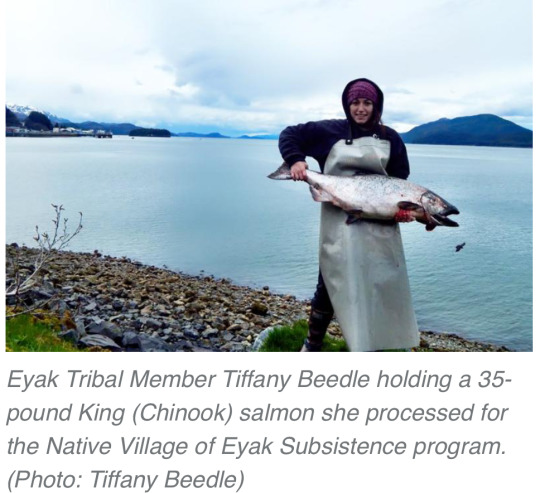
“With $4.3 million in NOAA funds, the Copper River Watershed Project and The Eyak Corporation will remove fish passage barriers, opening more streams for salmon spawning and subsistence fishing. [… As part of this effort, o]ld narrow culverts that constrict water flow will be replaced with “stream simulation” culverts wide enough to fit the full stream, including its banks. They are also deep to allow contractors to place stones and other material inside to mimic a natural stream bottom.”
May 8-14 news here | (all credit for images and written material can be found at the source linked; I don’t claim credit for anything but curating.)
#hopepunk#good news#rhino#white rhino#africa#conservation#rewilding#climate change#florida#wildlife#life expectancy#health#spain#green space#urban parks#recycling#trees#global warming#trans#affordable housing#australia#bison#romania#carbon#carbon capture#renewableenergy#reforestation#salmon#alaska native#nature
390 notes
·
View notes
Text
The Kenya Wildlife Service celebrated the successful transfer of 21 eastern black rhinos to establish a new viable breeding population for the species that was on the brink of extinction decades ago.
In an 18-day exercise executed by highly trained capture and veterinary experts, the Loisaba Conservancy received the 21 rhinos from three different locations, becoming the 17th sanctuary in Kenya where the mammoth animals can roam and intermingle.
“It’s incredibly exciting to be part of the resettlement of rhinos to a landscape where they’ve been absent for 50 years,” said Tom Silvester, CEO of Loisaba Conservancy.
Kenya had 20,000 black rhinos in the 1970s before poachers decimated them for their horns. By the time the Kenya Wildlife Service (KWS) was established in 1989, rhino numbers had declined to below 400.
Since then, Kenya’s eastern black rhinos have made a remarkable comeback and today there are an estimated 1,004 individuals.
Kenya is a stronghold of the eastern sub species of black rhino, hosting approximately 80 percent of the entire world’s surviving population.
“Surpassing the milestone of 1,000 rhinos within four decades is a significant accomplishment,” said Munira Bashir, Director of The Nature Conservancy in Kenya.
The reintroduction this month of these 21 animals this month is a great milestone in Kenya’s rhino recovery action plan, and was made possible by support from The Nature Conservancy, San Diego Zoo Wildlife Alliance, other partners—and the three reserves from where the 21 rhinos originated, Nairobi National Park, Ol Pejeta Conservancy and Lewa Conservancy.
“In the recent past, one of the main causes of mortality of rhinos has been territorial fights due to limited space in sanctuaries which has also led to suppressed growth rates due,” explained Dr. Erustus Kanga, the Director General of Kenya Wildlife Service. “I am elated to be associated with this momentous effort to secure more space for this cornerstone species.”
Meanwhile, southern white rhinos continue to thrive in Kenya, having increased from 50 individuals that were imported from South Africa in the eighties and nineties to reach the current population of 971 individuals.
Kenya is also playing a critical role in efforts to save the northern white rhino from extinction, as it is host to the only remaining two females of the species left in the world. The international BioRescue project has developed thirty embryos awaiting implantation into surrogate females within the closely-related subspecies of southern white rhino.
“The return of black rhinos to Loisaba, 50 years after the last known individual here was killed by poachers in the 1970s, is a demonstration of how impactful partnerships between governments and conservation NGOs can be for restoring, managing, and protecting our natural world,” said Dr. Max Graham, CEO and Founder of Space for Giants, one of the project partners.
“And, of course, the return of black rhinos here gives all of us one of the most precious commodities of all: hope.”
-via Good News Network, February 25, 2024
#rhino#rhinoceros#conservation#hope posting#endangered species#wildlife#kenya#good news#hope#zoology#zoo animals#keystone species
354 notes
·
View notes
Text
Video footage of Sumatran rhinoceros "Delilah", granddaughter of the Cincinnati Zoo's "Emi" and "Ipuh", alongside her calf. The little male was born on November 25th, 2023, at the Sumatran Rhino Sanctuary in Way Kambas National Park. There are likely no more than 50 Sumatran rhinos left in the wild, and only 11 in captivity.
#Sumatran rhinoceros#Sumatran rhino#Conservation#Mammal#CR#Video#Live specimen#Captive#Upload#Delilah
376 notes
·
View notes
Text
21 Black Rhinos Successfully Moved to New Kenya Home With Space to Breed–Hailing Return of Species After 50 yrs https://www.goodnewsnetwork.org/21-black-rhinos-successfully-moved-to-new-kenya-home-with-space-to-breed/
#good news#black rhino#kenya#africa#endangered species#environmentalism#science#environment#nature#animals#conservation
163 notes
·
View notes
Text
Some good news from Indonesia: the Sumatran Rhino Sanctuary in Way Kambas National Park has just announced that on November 25th their female Sumatran Rhino named Delilah gave birth to a healthy male calf!!!

(Photo credit: Indonesian Ministry of Environment and Forestry)
The as of yet unnamed calf is the second calf born at the sanctuary this month, and his mother Delilah was the second calf ever born at the sanctuary as well as the first captive bred Sumatran rhino to successfully give birth in captivity, so this is great news for captive breeding efforts of this species. There are only somewhere between 34 and 47 Sumatran rhinos in the wild, so captive breeding is incredibly important for this species survival. The sanctuary plans to eventually release the rhinos born at the sanctuary in order to help build the wild population back up. This baby is the fifth calf to be born at the sanctuary, and in addition to being Delilah’s first calf, he is also the first calf to be sired from his father, Harapan, who was originally born in the Cincinnati Zoo.
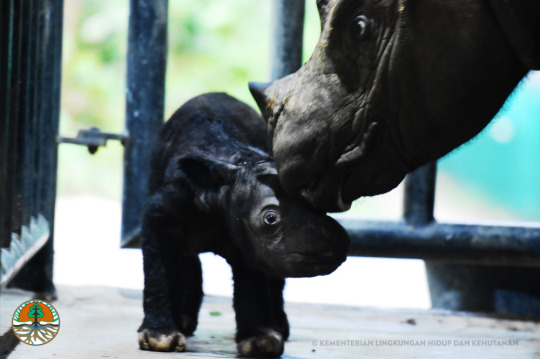
The mother and calf are currently being held in a naturalistic enclosure at the sanctuary (as the goal is to try to get them to live a life as similar to in the wild as possible) and are being heavily guarded to protect them from poachers. This species has suffered so much due to a combination of poaching for their horns as well as habitat loss. They are also pretty hard to keep and breed in captivity due to their shy nature, so this calf is amazing news!
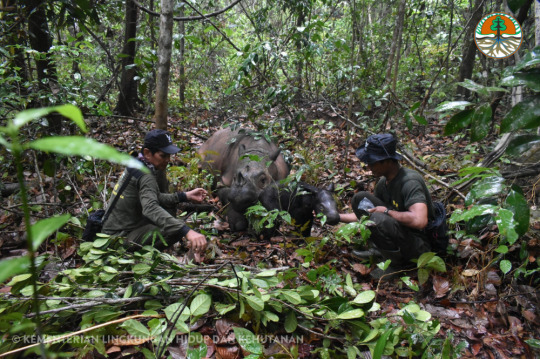
Also! Fun fact: this species of rhino is the closest living relative of the extinct Woolly Rhinoceros (Coelodonta antiquitatis). Which makes sense since the Sumatran rhino is the hairiest of all the living rhino species, which you can especially see with the babies.
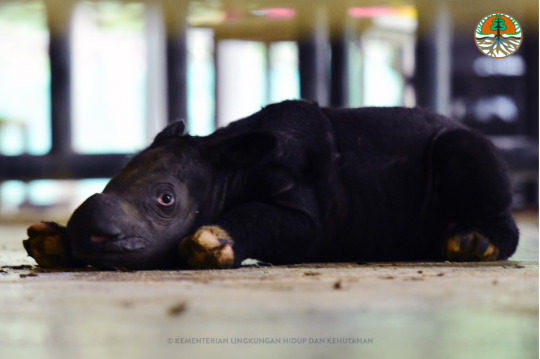
#indonesia#Indonesian wildlife#rhinoceros#sumatra#Sumatran rhinoceros#conservation#endangered species#good news#baby animals#baby rhino#wildlife#asian wildlife#animals#animal lover
357 notes
·
View notes
Text


Mama Jozi and baby Tamu at the Oregon Zoo.
61 notes
·
View notes
Text
A Sumatran rhino has been born in western Indonesia, officials said Monday, a rare sanctuary birth for the critically endangered animal with only several dozen believed to be left in the world. The World Wide Fund for Nature (WWF) and the International Union for Conservation of Nature (IUCN) estimate the population of Sumatran rhinos to number less than 80 on the Indonesian islands of Sumatra and Borneo. A female rhino named Delilah gave birth to a yet-to-be-named male calf weighing 25 kilograms (55 pounds) at Way Kambas National Park in Sumatra over the weekend, fathered by a rhino called Harapan. It was the fifth calf born under a semi-wild breeding program at the park, Indonesian Environment and Forestry Minister Siti Nurbaya Bakar said in a statement. The new addition to the Sumatran rhino herd at Way Kambas, which numbers 10, comes after another baby Sumatran rhino was born there in September.
Continue Reading.
220 notes
·
View notes
Text
🦏 Годування носорога з рук — звучить небезпечно, але носоріг так не вважає.
В Зімбабве 2 національних природних парки, де можна побачити носорогів і в один з них цих тваринок завезли зовсім нещодавно — у 2021 році. В парку Гонарєчжоу понад 30 років не фіксували жодного носорога, бо всіх винищили браконьєри. Тепер популяція відновлюється.
📹: Imire: Rhino & Wildlife Conservation @reilly.travers
#екологія#ecology#rhino#zimbabwe#national park#wild animals#wildlife conservation#wildlife#зімбабве#носоріг#національний парк#дикі тварини#годування з рук#заповідник
17 notes
·
View notes
Text
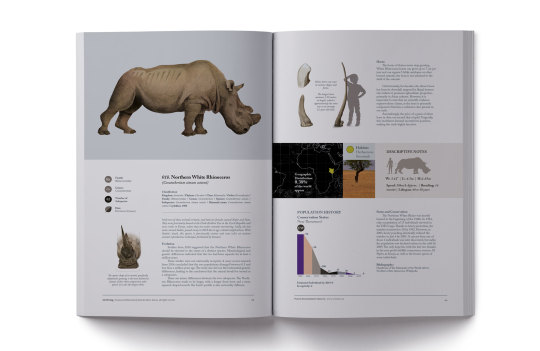
For the past two years, I've been illustrating every mammal on our planet. I've completed over 200 animals and now plan to create a book. In the book, I researched interesting facts about each animal, (Where they live, conservation status, evolutive paths, curiosities, etc). To fund this project, I've established a monthly club offering various ways for people to support my work. One option is receiving monthly book updates in PDF format. This month's feature, for example, is the White Rhinoceros, and the book uniquely covers its subspecies, setting it apart from others. There are more things than the book updates (There are actually a lot of things). If you feel that this speaks to you check out the club options by clicking here Giving a like and sharing this post is also very helpful. Thanks all for the attention and see you soon.
#northern white rhinoceros#white rhino#rhinoceros#rinoceronte#rinoceronte blanco#extinct animals#illustration#drawing#scientific illustration#book of animals#infographic#illo#wild animals#wildlife#animals#artist on tumblr#extinction#conservation
153 notes
·
View notes
Text
Animal of the Day!
Western Black Rhinoceros (Diceros bicornis longipes)

(Photo from Save the Rhino International)
Extinction Date- 2011
Habitat- Western and central Africa
Size (Weight/Length)- 1,400 kg; 3.75 m
Diet- Leaves; Branches; Shrubs; Grasses
Cool Facts- The western black rhinoceros was specially adapted to the dry shrubland of western Africa. Their upper lip was prehensile and allowed for careful manipulation of thorny bushes to eat the leaves. Their dark skin was highly susceptible for sunburn, often resulting in mud stained rhinos. Protection was originally strong for the western black rhinoceros, leading to an increased population in the 1930s. As these protections loosened, poachers killed the rhinos in their thousands for their horns that were, and still are, falsely believed to have medicinal purposes. By 2000, only 10 rhinos survived and the last one was spotted in 2006. Today, African rhinos are the second most poached animal in the world. National parks with armed guards are working to protect the remaining black and white rhinoceros that still roam savannahs today.
Rating- 13/10 (Their horns could measure 1.5 meters long.)
#animal of the day#animals#mammals#rhinoceros#rhino#wednesday#october 11#western black rhinoceros#black rhinoceros#black rhino#biology#science#conservation#the more you know#extinct#extinctober#white rhinoceros#white rhino
118 notes
·
View notes
Text

Three White Rhinoceros
By Hector D. Astorga
NBP International Awards
#hector d astorga#photographer#nbp international awards#ol pejeta conservancy#white rhinoceros#rhinoceros#rhino#animal#mammal#wildlife#nature
27 notes
·
View notes
Text
There are under 16,000 white rhinos left in the wild; the northern subspecies is functionally extinct, with only two older females left in the world. So all that remain are a few thousands southern white rhinos, to include those in captivity.
The guy who owned this white rhino ranch lobbied to have the South African ban on rhino horn sales lifted, even though there are international bans still in place such as the Convention on International Trade in Endangered Species. He had cut the horns of his rhinos to keep them from being poached, and stored them away. In spite of having hundreds of millions of dollars worth of horns in his possession, he wasn't able to continue buying feed for 2,000 rhinoceroses, hence the sale.
I don't know whether that sale includes the detached horns or not. It's maddening that as we approach 2024 there are still people who will pay exorbitant fees for rhino horns as a medication even though there's zero evidence it has any effectiveness, and there are likely collectors who want one simply to have it due to their rarity. I don't know enough about the potential for legalizing trade in horns cut off of living rhinos with the aim of making poaching less lucrative to have an opinion either way, but having seen how much misrepresentation and outright lying can happen in the global trade of animal remains I'm not feeling optimistic about this as a solution.
I am, however, grateful that this massive herd of highly endangered animals--about 15% of the world population of white rhinos--are now in the hands of those who are going to get them back out into the wild, albeit in protected areas. Here's hoping that these rescued rhinos will be able to add more genetic diversity back into the wild populations and strengthen them for the future.
#rhinoceros#rhinos#ungulates#perissodactyla#mammals#wildlife#endangered species#endangered animals#extinction#nature#animals#conservation#environment#animal welfare#scicomm#charismatic megafauna#megafauna#rewilding#habitat restoration
110 notes
·
View notes
Text
How big a deal for conservation is 2,000 rhinos? “The opportunity is endless. They have massive ecological value, the ability to maintain and shape landscapes … as well as economic value, for tourism, and community value. It’s a massive undertaking for conservation, but the end vision is a massive win.”
49 notes
·
View notes